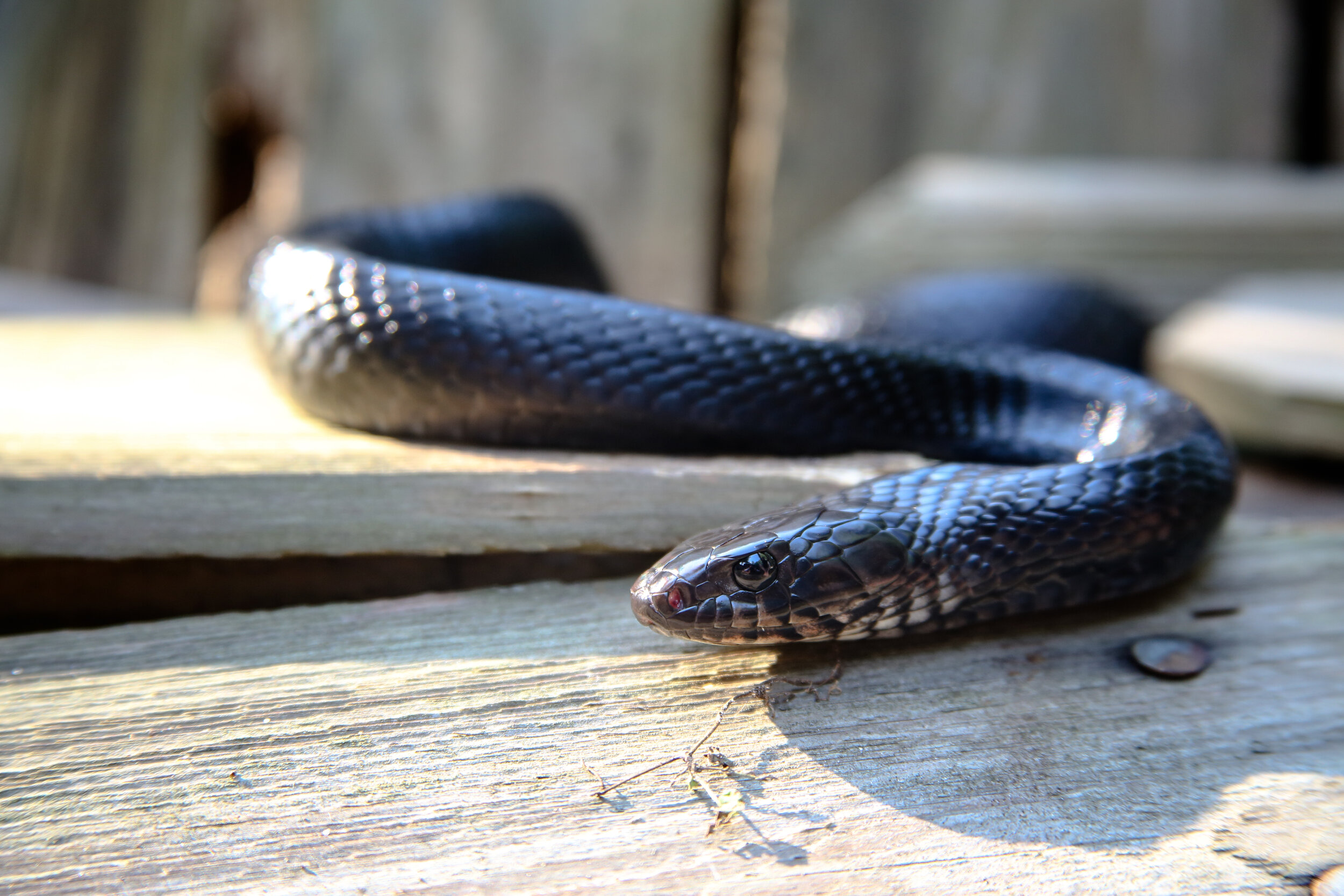Eastern Indigo
Drymarchon couperi
The Eastern Indigo snake is a Federally Protected species throughout their range. The Indigos habitat preference requires vast expanses of natural habitat and will travel long distances during seasonal changes for overwintering, foraging, and breeding. This travel puts these snakes in vulnerable situations while going through fragmented habitat and roadways. Habitat loss and fragmentation are the leading causes of Eastern Indigo decline.
Breeding season is November through April, and females will produce 4 to 12 eggs and lay those eggs between May-August. Egg incubation takes about 90 days! Indigo snakes are not picky eaters and will eat a wide variety of prey, including venomous and non-venomous snakes! They also feed on fish, frogs, lizards, small mammals, and birds. The Indigo is the longest native snake in North America and can reach the length of 8 ft and weigh up to 11 pounds! Females are smaller than males and average closer to 6 ft in length. The Indigo is a Non-venomous snake and has strong jaws and sharp teeth and can inflict a painful bite. They may come off as fierce, but they are known for being docile even in the wild, and this is among the factors that made them popular pets.
Keeping Eastern Indigo's or collecting them from the wild is illegal. Possession of Eastern Indigo is only for educational organizations, licensed research, and breeding facilities aiming to conserve the species and increase wild populations.
These snakes often use gopher tortoise burrows for shelter. Gopher tortoises are also a protected species, and the loss of gopher tortoise habitat and, in turn, the tortoises themselves can also impact the Indigo! The female Indigo will often deposit their eggs in Gopher tortoise burrows.
Learn more about the Gopher Tortoise here!
The Indigo is not the only black snake in their range! They are often confused with Black Racers that are far more common. Check out our ID card to learn the difference between Southern Black Racers and Eastern Indigos!
FWC wants to know more about the Eastern Indigo Snake, a federally threatened species.
Please report sightings through the Florida Rare Snake Registry, where other rare upland snake species (Southern Hognose Snake, Florida Pine Snake, Short-tailed Kingsnake) can also be reported. Photographs should be included to verify species identification. Reports of these species observed in other states will be accepted. https://public.myfwc.com/fwri/raresnakes/UserHome.aspx?id=


